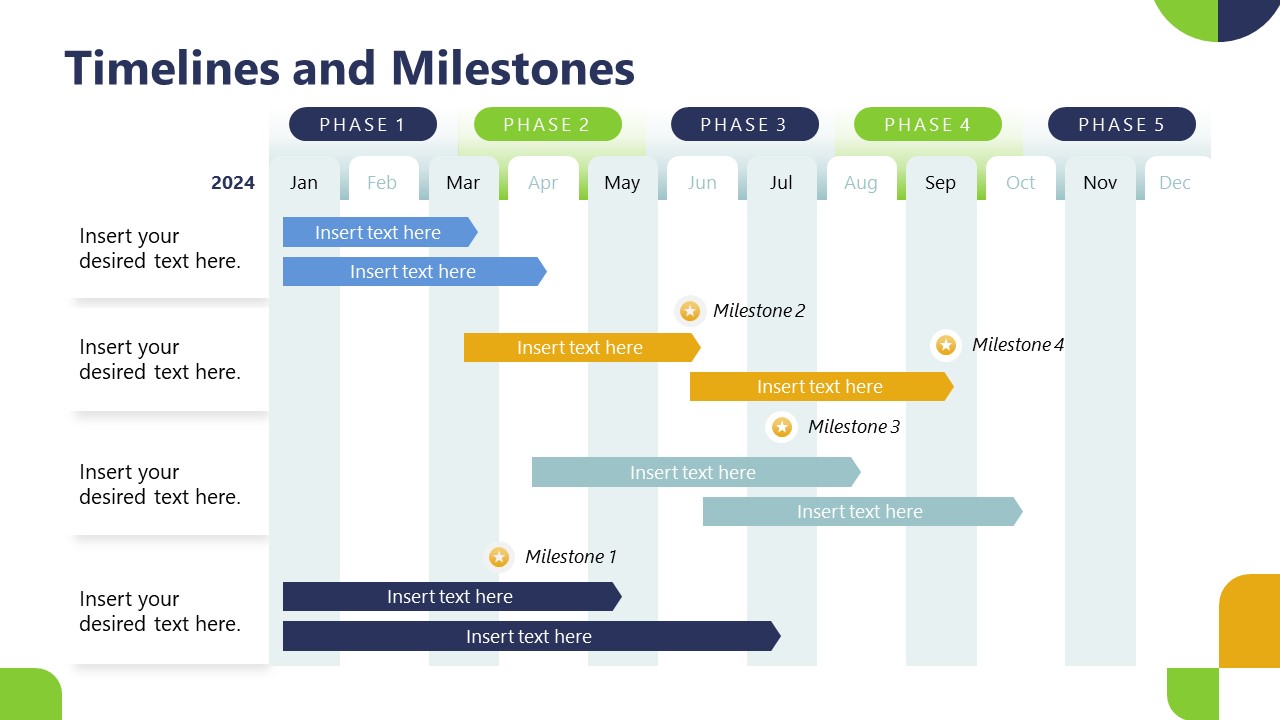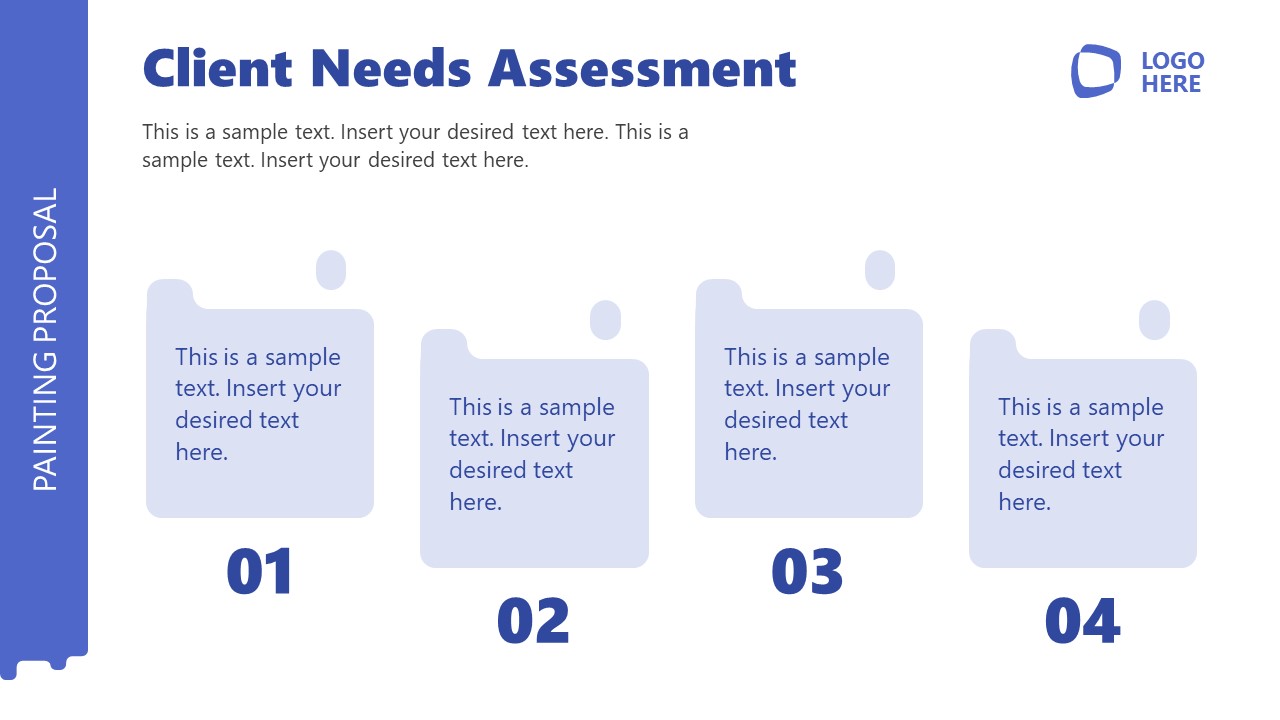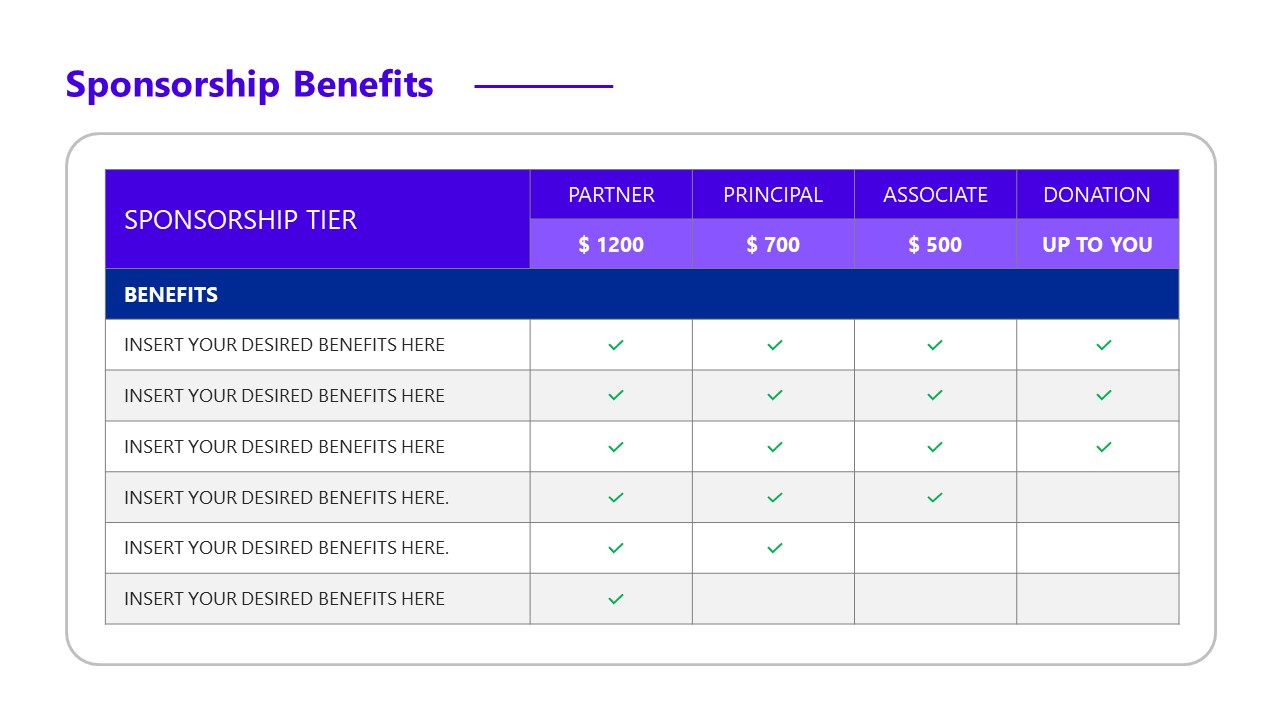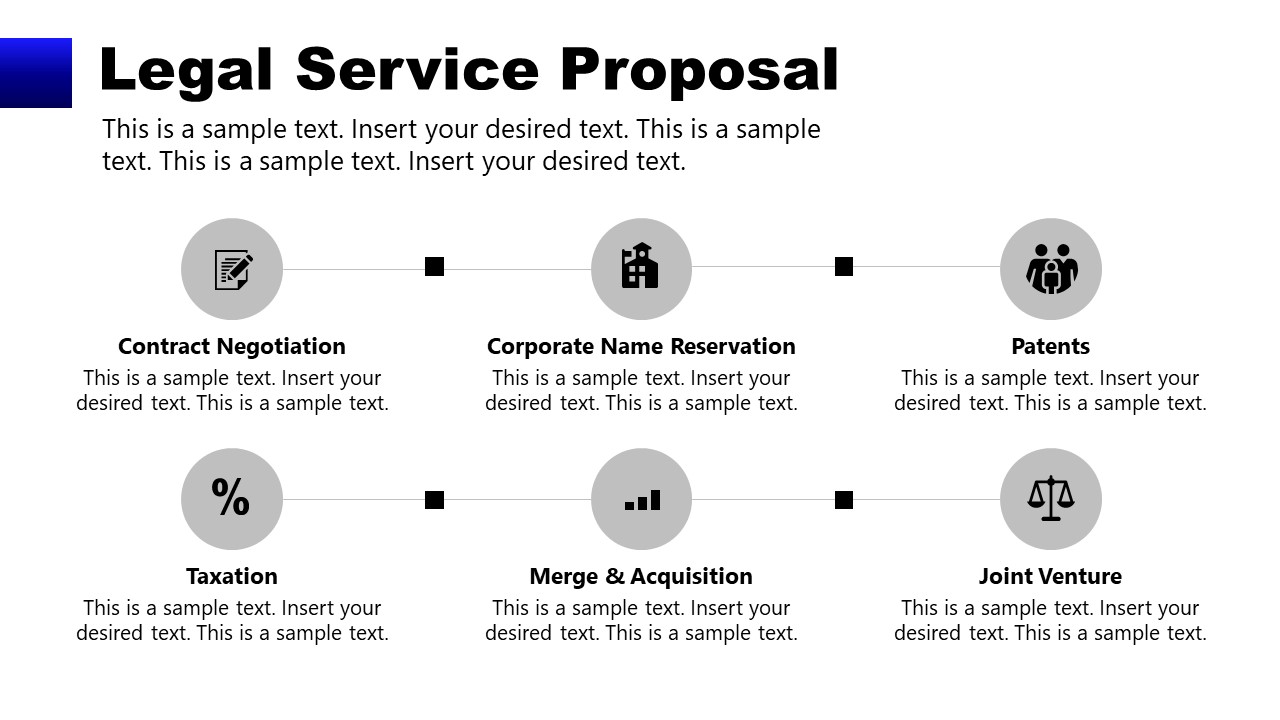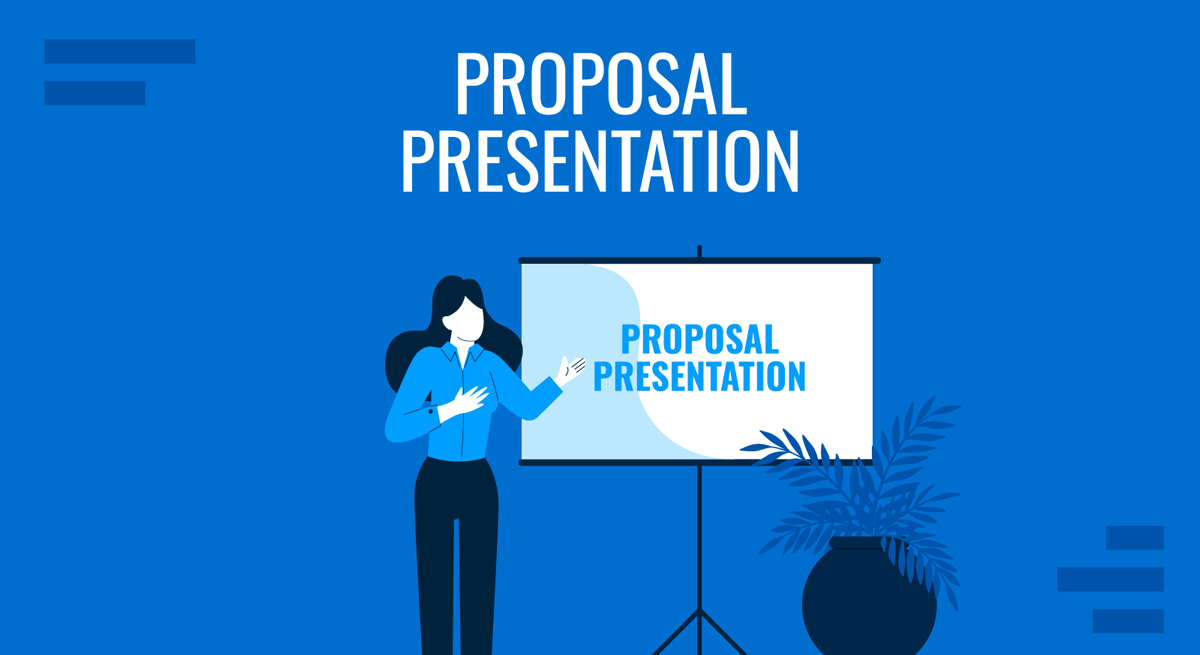
Whether you’re pitching a new project to stakeholders, seeking investment from potential backers, or presenting a solution to a client, the success of your proposal hinges on your ability to convey your ideas clearly and convincingly. It’s not enough to count on flashy graphics: the presenter must understand how to communicate ideas in the same business language as their target audience.
This article explores the critical components of a successful proposal presentation, providing you with practical insights and strategies to craft and deliver a compelling pitch. From understanding the core elements and structuring your presentation to delivery techniques, this comprehensive guide will equip you with the tools you need to make your proposal stand out and achieve your business objectives.
Table of Contents
- What is a Proposal Presentation?
- What Makes a Great Proposal Presentation?
- Elements of a Proposal Presentation
- How to Start a Proposal Presentation
- Tips for Delivering the Proposal Presentation
- How to End a Proposal Presentation
- Recommended PPT Templates for Proposal Presentations
- Final Words
What is a Proposal Presentation?
A proposal presentation is a communication framework aimed at convincing an audience to adopt a certain idea, plan, or project. It serves as a persuasive tool to pitch products, services, or concepts to potential clients, investors, or stakeholders. A business proposal presentation often incorporates data, case studies, and visuals to build a compelling argument, making it an essential aspect of business development and strategic planning.
What Makes a Great Proposal Presentation?
A great proposal presentation is clear, concise, and compelling. It captures the audience’s attention, holds their interest, and convincingly presents the proposed solution’s benefits. The following attributes contribute to a successful presentation:
Clarity
Avoid jargon and overpopulated sentences that might confuse your audience. Use straightforward language to ensure your message is easily understood. If you need to introduce a complex concept in your presentation, work your way through graphics and try to simplify ideas as much as possible.
Structure
A well-thought presentation structure guides the audience through the proposal logically. It should start with an introduction that outlines the purpose, followed by a detailed discussion of the problem, proposed solution, implementation plan, and expected benefits.
Visual Appeal
Visual elements such as charts or graphs, images, and videos can enhance understanding and retention. To maintain a polished look, use a consistent and professional design for your slides.
Relevance
Tailor your content to the audience’s needs and interests. Address their pain points and demonstrate how your proposal provides a solution. Use relevant examples and case studies to support your arguments.
Engagement
Engage your audience with questions, interactive presentation elements, and storytelling. Personal anecdotes or client testimonials can make your presentation more relatable and persuasive.
Elements of a Proposal Presentation
In order to create a winning proposal presentation, we must count with the following elements.
Title Slide
This is the audience’s first impression. It sets the context and tone for the entire presentation and must feature a professional and polished look.
Clearly state the presentation title, your name, and the company’s name. If relevant, add a date, but it’s not absolutely required. Branding presentation elements like logo, colors, and fonts need to remain consistent to reinforce your company’s identity. You can use a pertinent image or graphic to the presentation topic (i.e., if it’s a product presentation, a product photo highlighting your product) to make the slide more visually appealing.
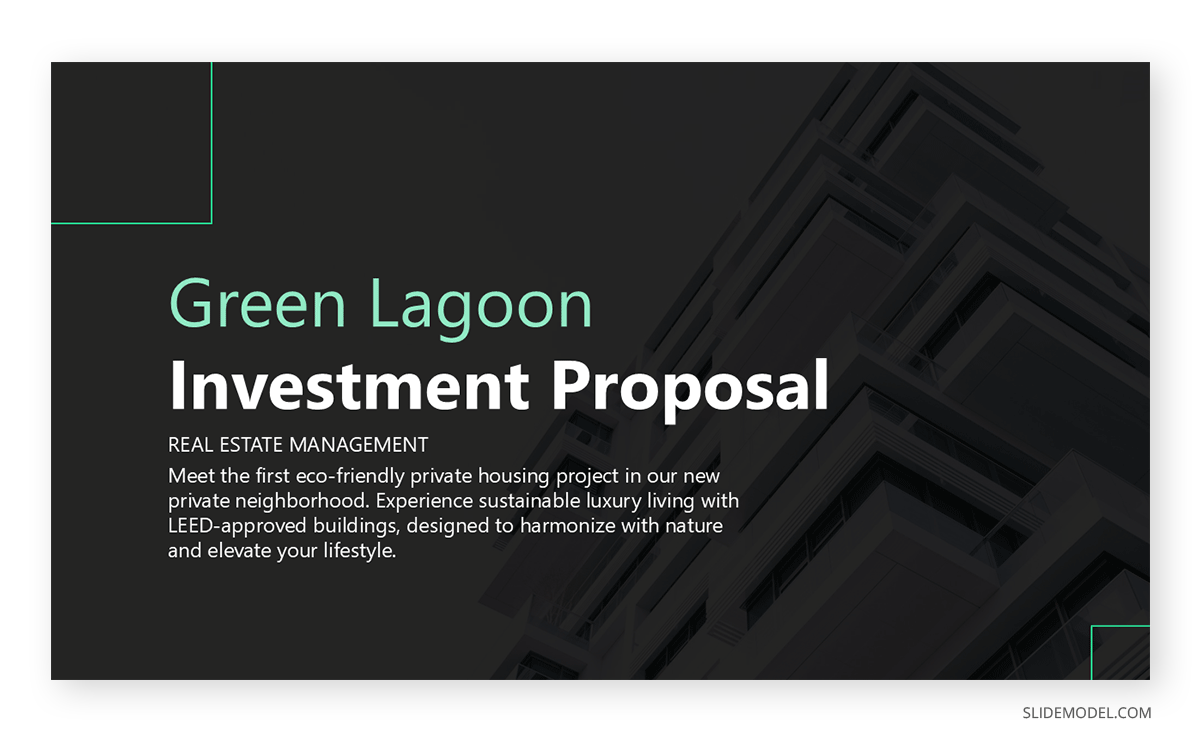
Avoid cluttering the slide with too much text. Any secondary information, like what the presentation is about, belongs on the introduction slide. Complex animation effects may deter the audience’s focus and render your slide deck amateurish.
Another common mistake is to use poor font pairing choices, e.g., script fonts with poor readability or low-sized texts.
Introduction Slide
Here, we provide the audience with an overview and context for the proposal, outlining the problem or opportunity. Factual information like financial data, surveys, or any kind of data presentation that can back up your problem statement is relevant. Remember to deliver a teaser of the full problem or opportunity, as that information is bound to be expanded in the next slide.
Explain the purpose of your proposal and what you aim to achieve. This will give the audience a clear understanding of the presentation’s objective from the outset. However, you should avoid ambiguous statements that can confuse the audience.
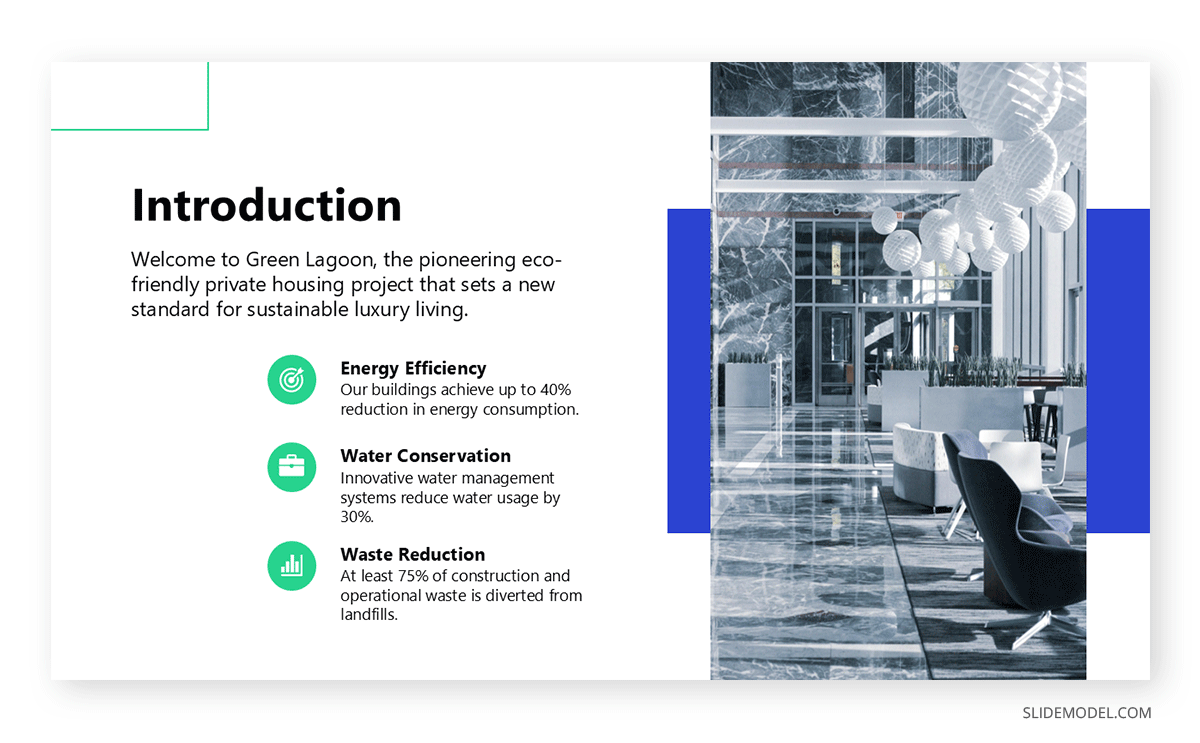
Problem Statement Slide
Clearly defining the problem or opportunity is essential for establishing the need for your proposal. It helps the audience understand the context and significance of your proposal. A well-articulated problem statement sets the stage for your proposed solution and underscores the urgency or importance of addressing the issue.
Support your statement with data, statistics, and real-world examples to illustrate the problem’s impact. Data adds credibility and helps quantify the issue. Additionally, we can make the problem relevant to the audience by linking some of its key points to their experiences or interests. This is a social proof of how the problem affects them directly or indirectly.
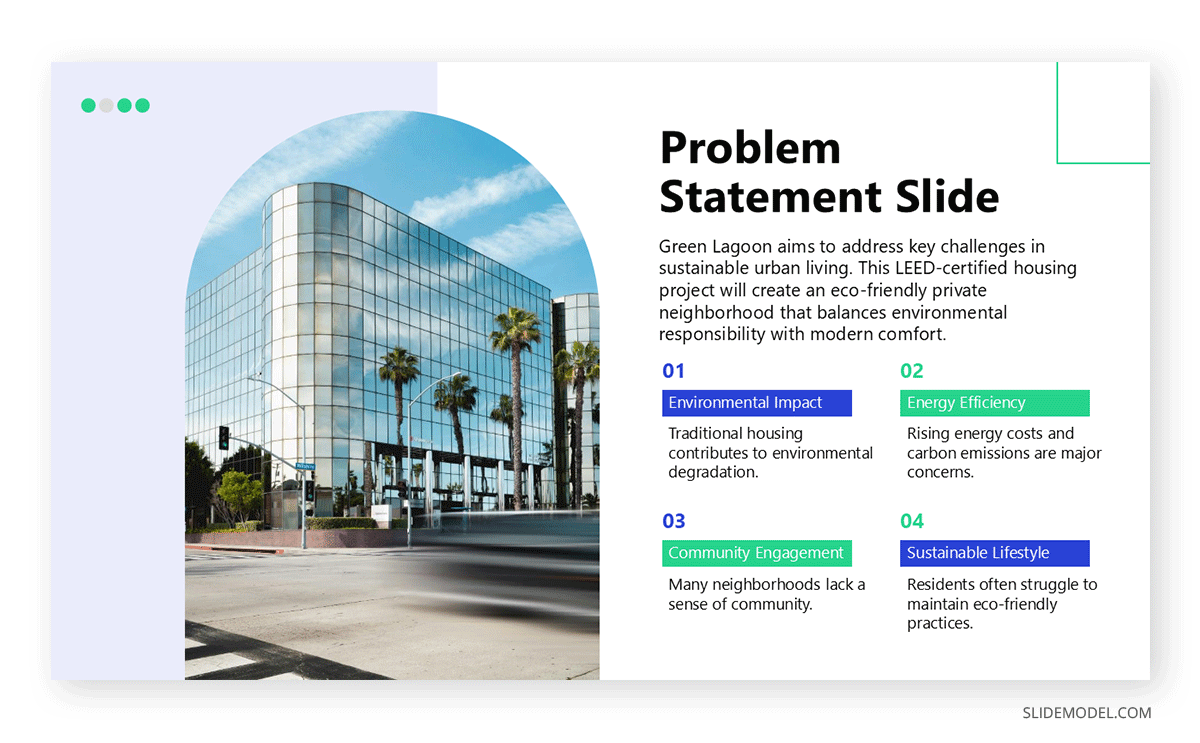
Compare the current situation with industry benchmarks or best practices to highlight the gap or deficiency. On this behalf, there are excellent presentation tools like gap analysis templates and comparison chart templates.
Proposed Solution Slide
The proposed solution is the core of your presentation, outlining how you plan to address the problem or seize the opportunity. This section is crucial for convincing the audience of your proposal’s feasibility and effectiveness. A coherently conveyed solution can demonstrate your expertise, innovation, and ability to deliver results.
Provide a detailed explanation of your proposed solution. Break it down into clear, actionable steps to help the audience understand how it works. Emphasize the solution’s benefits and competitive advantages. Explain how it will address the problem or capitalize on the opportunity. Diagrams, charts, and infographics are powerful tools to visually represent your solution without requiring lengthy walls of text in your slides. We invite you to check our article on how to present a project proposal for more strategies.

Don’t overlook possible challenges or limitations of your solution, as they are likely to come up in a Q&A session. Address them proactively and explain how you plan to mitigate them.
A good practice is to conduct a cost-benefit analysis to show the financial feasibility of your solution. Compare the costs involved with the expected benefits to demonstrate value for money.
Implementation Plan Slide
The implementation plan outlines the steps necessary to execute your solution, demonstrating feasibility and practicality. This section is key for convincing the audience that your proposal is not just theoretical but actionable and achievable. A detailed and realistic implementation plan can build confidence in your ability to deliver the proposed solution.
Outline the key steps, timelines, and resources needed to implement your solution. A detailed plan helps the audience understand what is required to bring your proposal to fruition. Identify major milestones and deliverables, as they provide a sense of progress and achievement, helping to keep the project on track.
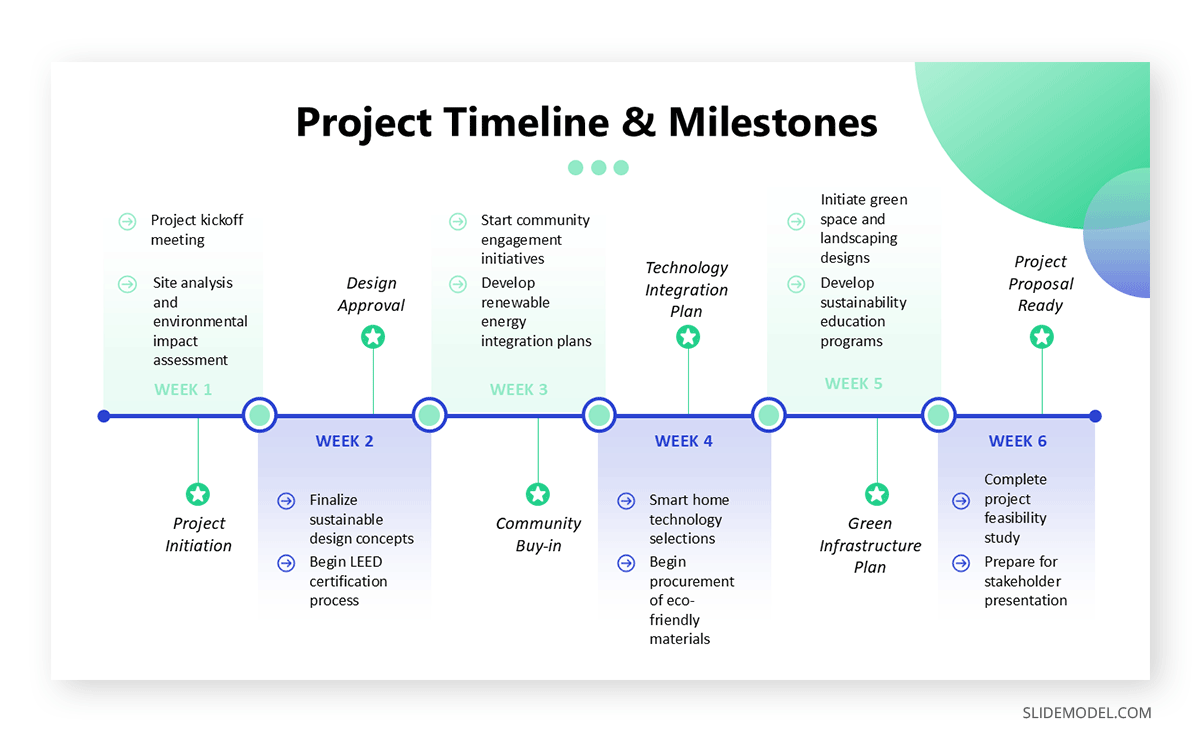
Finally, develop a risk management plan to identify, assess, and mitigate potential risks. A robust risk management plan can enhance the audience’s confidence in your proposal.
Financials Slide
The financial section demonstrates the economic viability of your proposal. This section provides a detailed analysis of the costs involved, potential revenue, return on investment (ROI), and overall financial impact.
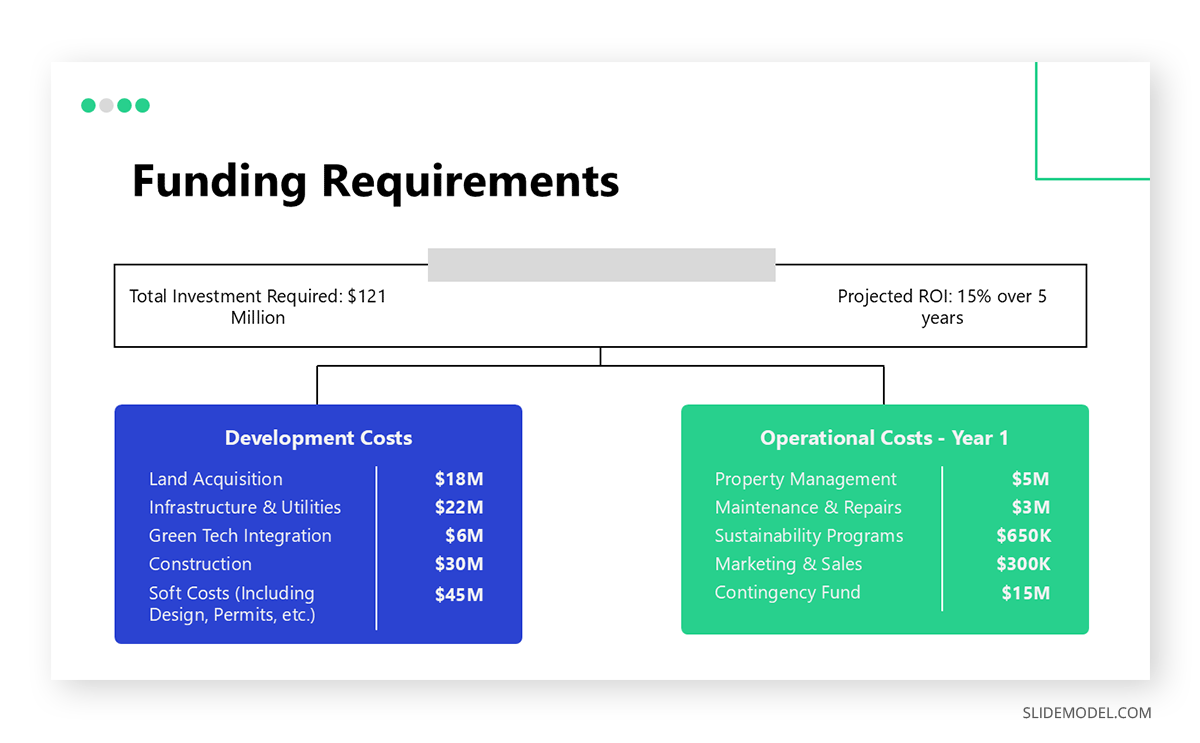
Don’t underestimate costs or overestimate revenues. Be realistic in your financial projections to maintain credibility. A break-even analysis is excellent for showing when the project will start generating profit, which boosts the perception of the proposal’s financial viability.
Conclusion Slide
The conclusion summarizes your presentation’s key points and reinforces your proposal’s value. It provides a final opportunity to persuade the audience and leave a lasting impression. A strong conclusion can help seal the deal and gain the support or approval needed for your proposal.
Recap the main points of your presentation, including the problem, proposed solution, implementation plan, and financials. Emphasize the benefits and value of your proposal and highlight the positive outcomes and advantages of your solution.
End with a clear call to action, specifying what you want the audience to do next. A call to action can include approval, funding, support, or any other desired outcome.

How to Start a Proposal Presentation
There are numerous ways on how to start a presentation, especially for proposals, but in our experience, it’s best to stick with a strong, attention-grabbing opening statement. You can pick from a surprising fact related to your problem statement, a compelling statistic, or even a thought-provoking question linked to your proposed solution.
An icebreaker can help relax the audience and make them more receptive to your presentation. For instance, you could share a relevant and engaging story or anecdote that ties into the theme of your proposal. A personal story can humanize you and make the presentation more relatable.
Another approach is to ask the audience a simple question that requires a show of hands or a quick verbal response. This encourages participation and makes the audience feel involved from the start.
Acknowledge the audience’s role or contributions with a personal touch. For in-company presentations, you can use a line similar to: “I know that many of you have been working tirelessly to improve our company’s performance, and I believe this proposal can help us achieve even greater success.” This creates a common ground with the audience, increasing their interest in what you have to say next.
Tips for Delivering the Proposal Presentation
Tip #1 – Voice Tone
Use pitch, tone, and volume variations to emphasize key points and maintain audience interest. Speak at a moderate pace, as speaking too fast can confuse the audience, whereas speaking too slow can lead to boredom.
Tip #2 – Use Silence Effectively
Working with pauses in your speech can help important points sink in. Silence in a presentation is a powerful tool for emphasis, and as a speaker, you can moderate it by introducing a 30-to-50-second pause after a mind-blowing fact about your proposal.
Tip #3 – Be Adaptable
Not all proposal presentations work alike. Be prepared to adapt your presentation if the situation calls for it, such as if you need to move forward with a Q&A session much sooner than you expected. Flexibility shows professionalism and command of your topic.
Tip #4 – Body Language
If space allows, move around the stage or presentation area with purpose. Avoid pacing or fidgeting, which is distracting and causes unease, lack of preparation, and lack of professionalism. Appropriate hand gestures can help emphasize points and convey enthusiasm as long as you don’t overdo it.
Try to stay relaxed and calm. Deep breathing techniques before and during the presentation can help manage anxiety.
How to End a Proposal Presentation
Now it’s time to acknowledge how to end a presentation when working with business proposal presentations or any kind of professional-ranged proposal.
As we mentioned before, you need to clearly state what you want the audience to do next. This could be approving the proposal, providing funding, supporting the initiative, or any other specific action. Outline the steps required to move forward. Make it easy for the audience to understand what is needed from them.
Emotions are a persuasive factor in a conclusion. If you feel the proposal is likely to be accepted, paint a vivid picture of the future. Describe the positive outcomes and improvements that will result. Thank the audience for their time, attention, and consideration. Acknowledging their participation helps to build a positive relationship.
Recommended PPT Templates for Proposal Presentations
In this section, we selected some of our best Project Proposal PowerPoint templates to speed up your slide design process. Keep in mind you can test the Free Business Proposal PowerPoint Template and adapt it to your requirements. You can also find premium proposal PPT templates for presentations in our dedicated category.
Final Words
Crafting an effective proposal presentation requires meticulous planning and strategic execution. Each element must be well-organized and clearly articulated, from a compelling opening to a persuasive conclusion. By following the methodology shown in this article, you can enhance your proposal’s impact, build credibility for your brand, and increase the likelihood of securing support from your audience, whether they are investors, clients, or internal stakeholders.
